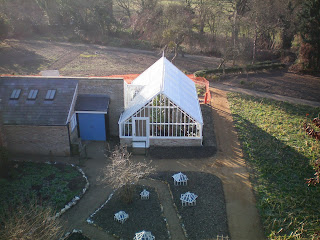Following an e-mail I received from Plantnetwork which gave news of a wonderful free offering of glasshouse plants being donated by Liverpool City Council.
I quickly turned my attention to hiring a transit van. The following morning I left Myddelton House at 6am and travelled north east with no real idea of what treasures I may find. The email explained that following the rationalising of Liverpool City Councils indoor plant collection, somewhere in the region of 3000 plants were being offered as donations. Examples of plants listed in the email included bromeliads, dracaenas, cacti, orchids and codiaeums. When I arrived just after 10am I met with David Kelly who very kindly showed me around the extensive service glasshouse range. Some of the plant material can trace its lineage back over two hundred years. The liverpool MP and botanist William Roscoe (1753–1831) was the founder of the first of the three Liverpool Botanical Gardens.
I was delighted with the diverse range of plants that were housed in the park department nursery. The collection was transferred from the last botanical garden which was closed in the mid 1980's.
For information on Liverpool botanical history and William Roscoe
http://www.londonartistsprojects.com/files/MrRoscoesGardenBrochure.pdf
As the email had been sent to a number of gardens/gardeners I was not the first and therefore this did mean that the majority of the larger plants had already been reserved by other gardens such as Tatton Park and Chester Zoo. I spent the next three hours rushing from glasshouse to glasshouse selecting and packing the plants into the van....like a child in a sweet shop!
The next challenge was to get home, empty the van and get it back to the hire company before a second day hire charge. The van-load of plants will broaden our collection with in our new Victorian glasshouse range.
 |
| Aechmea coelestis var. albomarginata |
 |
| Dendrobium x delicatum 'Album' |


























